In honor of Col. John Russell’s 100th birthday on Feb. 2, we’re looking back at the Living Legend profile of the Olympic show jumper and coach, originally published in the Sept. 19, 2011, issue.
LIVING LEGEND: Col. John Russell Is Still Giving Orders
In Col. John Russell’s birth year of 1920, Woodrow Wilson was in the White House, American women gained the right to vote, and Prohibition took effect. The average price for a new car was $400, and a decent home could be purchased for $5,000. At the 1920 Olympics Games in Antwerp, Belgium, Sweden took home the gold medal in show jumping.
On his family’s dairy farm near Harrisburg, Pennsylvania, a young Russell had already begun his own journey toward the Olympics. Aboard a workhorse named Old Bill, the 5-year-old boy rode bareback all over the farm. And when he was 7, his father drove home one day with a gift for his son in the back seat of his sedan: a Paint pony named Spot.
“I rode that pony everywhere,” Russell recalled, “and I even did a little jumping on him. My father campaigned trotters and pacers at county fairs, and I tried to teach those horses to jump, too, but I wasn’t too successful.”
Russell’s earliest riding education was mostly seat-of-the-pants, gained from galloping his pony in match races with local children and playing cowboys and Indians on the mountain behind the farm. A next-door neighbor, a colonel in the National Guard, provided Russell’s first lessons in basic equitation. But jumping remained the boy’s passion, and when he turned 16, his father bought him a Thoroughbred named Scarlett O’Hara, acquired from a circus where her specialty had been leaping over bars of fire.
“Scarlet was brave. She was very hot, and she could really jump,” said Russell, who also taught the mare to jump over his convertible. “At the local one-day shows, we won a lot of high-jump classes and the old-time triple-bar classes. They’d set just four or five fences in the ring, all of them triple bars, and they’d just keep raising them higher and higher.”
Russell received instruction from notable horsemen Morton “Cappy” Smith and Joe Green. But when he turned 18, a wider world was beckoning him off the farm. In 1938, he joined the 104th Cavalry National Guard Regiment in Pennsylvania (led by the neighbor who had schooled him in equitation). Two years later, Russell was sent to the cavalry unit at Fort Riley, Kansas.
The assignment couldn’t have been a better fit for Russell.
“Even though we went to camp with the horses, they soon ‘mechanized’ us and moved us onto motorcycles,” Russell said. “Still, we had a couple hundred horses out there, and we could ride any of them whenever we wanted to, day or night, because there were lights on the field. And we continued doing the mounted drills.”
But drills were soon replaced by a flurry of reassignments as the United States entered World War II. Russell was sent to Army Officers Candidate School, graduating as a second lieutenant. He ascended to the rank of captain as he served in combat zones in North Africa and Germany.
Russell was in Casino, Italy, recovering from bullet wounds, when a colonel arrived and said he had orders to take Russell to join a special unit.
“My commander said: ‘Well, he’s got a couple of holes in him, but I guess you can have him.’ The colonel took me and several other officers to a big dinner and a nice hotel, then the next day he told us we were flying to Tel Aviv to attend intelligence-support school,” recalled Russell, who served the remainder of the war as an air-support specialist, guiding planes near the front lines.
Rising Star
Following the war, Russell took over command of the 88th Reconnaissance Company (aka the Blue Devil Cavalry Division). The unit was based in a castle in northern Italy and included a string of about 20 horses.
“We were out there by ourselves with all these horses,” said Russell, “and we were given permission to train them and take them to horse shows. So we showed all over Austria and Italy. Two of them developed into pretty good horses, including one named Blue Devil, who I later took to the 1948 Olympics as a reserve horse and who won a three-day event in Vienna.
“We weren’t spending all our time riding, of course,” Russell added. “We also ran patrols from the castle.”
Taking advantage of the access to Army-owned horses, Russell continued to hone his equestrian skills, training with the Italian Equestrian Team under Count Keckler, who’d ridden with Italian Prime Minister Benito Mussolini’s Black Shirt Riders. In 1947 Russell reigned as northern Italy’s leading rider. In 1948, Russell was reassigned to Fort Riley, where he taught advanced horsemanship and became a member of the fledgling U.S. Equestrian Team, which would soon replace the Army in selecting Olympic equestrian squads.
Russell earned a coveted spot on the U.S. show jumping team for the 1948 Olympics in London, and one of his most vivid memories involved the opening ceremonies for those Games.
“As we walked into the stadium,” Russell said, “I noticed that a lot of the other athletes were carrying newspapers. I had no idea why, until they released thousands of white pigeons toward the end—and we all got splattered. So at the 1952 Olympics, I made sure to carry a newspaper for protection.”
For the first year or two after the 1948 Summer Games, Russell said, “The U.S. Olympic team horses were all in Munich at V Corps Army Headquarters, where we trained. And they were all under my command as the headquarters commandant of the brigade, so that worked out pretty well. I was able to keep Blue Devil for a good while.”
Every minute that Russell wasn’t engaged in Army duties was devoted to equestrian pursuits. He was on the team that won the Nations Cups in Lucerne, Switzerland, and Dublin, and he also won the Puissance class in Dublin. In 1949, Russell won the Prize of Paris and helped his U.S. teammates win the Puissance class in Vichy and the Nations Cup in Paris.
Juggling his Army career with international show jumping could get tricky, Russell admitted. The support and freedom he was granted for attending shows varied, “depending on who was general at the time,” Russell said with a chuckle.
Fortunately, Russell wasn’t going broke in the process. “At that time in Europe,” he said, “the horse shows paid the travel expenses for you, your horses and your groom, because they wanted good riders at their shows. So I was able to afford to show, especially when I would win prize money.” (Russell remembers some European jumping events in which the purse split between the top eight riders was $25,000—enormous money in those days.)
Russell rode into the 1950s at the same blazing pace as the previous decade. In 1951, he won the West Point Challenge Trophy in New York aboard Blue Devil. The following year, he helped the United States capture the Nations Cup in Mexico on an Army-owned horse named Swizzlestick. That same year Russell became the first non-German to win the ruggedly challenging Hamburg Spring Derby, on the first-ever American-bred horse to win it. That horse was Rattler, a Texas-bred Quarter Horse sired by Rattle Snake Tom.
“Rattler was a horse that I rode a lot at Fort Riley in 1947 and 1948,” Russell said. “The team captain, Col. Earl Thomson, had stopped doing the jumpers, so he turned Rattler over to me. I used him as a reserve horse on the 1948 Olympic team. Rattler was barely 16 hands, but he was built like a Mack truck and all muscle. He was very agile and very brave.”
The Hamburg Spring Derby organizers weren’t happy that a non-German had captured the prestigious event—or that the winning horse was an outsider as well.
“It was funny,” Russell said, “because at first the Germans tried to claim that Rattler was actually a captured horse, which would mean that a German horse had really won. But we were able to produce papers that proved Rattler was bred and born in El Paso, Texas. Then, because there were a lot of Russells living in Germany, they claimed that surely I was a descendant of one of them, which would mean that a German rider had really won. But of course we were able to prove otherwise.”
Innate Intuition
Later on that year, Russell was reassigned to Pennsylvania, where he successfully tried out for the 1952 Olympic show jumping team. His mount was Democrat, a carryover from the 1948 team, who now was 19 years old and showing the effects of navicular disease.
“The big challenge was keeping Democrat sound enough to compete,” said Russell. “He got around the Olympic courses, but he had some rails, and I didn’t have the heart to get after him. In those days, we didn’t have things like bute. We had to treat him with antiphlogistine, mothballs melted in the foot, and white gas to stand him in. It didn’t help that the ground in Helsinki [Finland] was hard as rock. But Democrat made a tremendous effort.” (The horse was retired the next year to Whitney Stone’s Virginia farm.)
Col. Earl Thomson and Col. John Wofford, also the first president of the new USET, coached the 1952 Olympic team, which earned a bronze medal. Both men were former Olympians, Thomson having won eventing and dressage medals in three previous Games.
“I liked being trained by people who had done the Olympics, who really had a feel for it,” Russell said. “Tommy didn’t say much; the main thing he taught you was control and to get there at a nice spot. He also did something that I don’t see much of today: Everybody walked the course alone with him, for their individual horses, not all at once as a group.”
Wofford died in 1955, but his family’s history with Russell runs deep. After retiring from the Army in the late 1940s, Wofford bought a horse farm that backed up to Fort Riley. Wofford’s son James “Jimmy” Wofford followed in his father’s footsteps, becoming a three-time Olympian in eventing.
Jimmy said he doesn’t remember a time when Col. Russell wasn’t in his life. “From 1969-70, Johnny was my coach while I was running the modern pentathlon training stables as part of my Army duty at Fort Sam Houston,” said Jimmy. “At that time, Johnny was the pentathlon team’s head coach and its riding coach, so I was the non-commissioned officer in charge. I handled the day-to-day stable management and was the team’s assistant coach.”
Jimmy said he’s long admired Russell’s skills as a horseman. “Johnny has the uncanny ability to know what horses and riders are capable of doing,” Jimmy said. “And despite knowing all he knows, he rarely makes what I would call ‘technical’ comments. George Morris is a technical coach; Johnny is an intuitive coach. You don’t hear Johnny talking about keeping a straight line from horse’s mouth to rider’s elbow, or riding deeper in your heels, that sort of thing.
“Instead,” Jimmy continued, “it’s quite common to see one of Johnny’s students approach a jump and make an error that I would describe in technical terms, but Johnny will just say: ‘Don’t let him do that,’ without explaining what ‘that’ is. He wants the rider to figure it out. He’ll just keep saying, ‘Come again’ to the jump, and eventually the rider will hear him say, ‘There, that’s right.’ ”
The result, Jimmy said, is the student ends up with an answer based on his own feelings, instead of on mechanical explanations. “Johnny has a very unusual teaching style, and not one that many of us could copy, but I’ve seen it work,” said Jimmy. “It’s an almost magical insight. Johnny’s strongest suit has always been his intuition about horses and riders.”
Jimmy describes Russell as “charming, with a real twinkle in his eye. He’s the consummate horseman, a true icon and absolutely horse-crazy. To this day, Johnny wakes up every morning thinking about plans for his horses and his riders.”
Switching Gears
In 1953, Russell (by then an Army major) was still immersed in international competition. He rode Lonie on the U.S. World Championship team in Paris and in 1954 was the fourth-leading rider in Germany. A year later, he competed in the World Cup at Aachen and as a member of the USET (with Bill Steinkraus and Hugh Wiley) at the Nations Cup in London.
The team was coached by Bertalan de Nemethy, described by Russell as “a down-to-basics kind of coach and a very good stable manager. Bert had a good way of putting a team together and preparing it well for a big event.”
The squad toured Europe in preparation for the 1956 Stockholm Olympic Games. But military duties (and lack of a qualified horse, since Lonie broke a bone in her hoof) prevented Russell from trying out for his third consecutive Olympics, and he subsequently retired from competitive riding.
By that time, Russell had been called upon to take a major leadership role in Olympic modern pentathlon. His involvement with that sport placed him in Texas in the mid-1950s and carried him well past his retirement from the Army in 1980.
Today, Russell presides over the 60-acre Russell Equestrian Center in San Antonio, Texas. He still trains his riders—most often from a golf cart—at home and at the shows. One of Russell’s longtime students is Gayle O’Rear, an adult amateur whose horse competes in the pre-green hunters.
The lessons O’Rear has learned from Russell over the years “may not be in the books,” she said, “but the skills and philosophies have worked for me. First, he teaches us to keep things simple. When I complained that I was having trouble seeing my ‘spot,’ Colonel said: ‘The horse has eyes.’ In the same vein, he also said: ‘If you can’t see your spot, it’s probably not there, so just sit and wait until the horse jumps.’
“Secondly,” O’Rear added, “he teaches us to ride every horse as though it’s going to be the best horse you’ve ever ridden. He feels that preconceived notions about how bad a horse may be will cause you to ride defensively instead of confidently, which will then cause the horse to react negatively … John’s taught me that the only way to learn to ride is by doing it and by riding a variety of horses—good, bad and indifferent.”
O’Rear also admires Russell’s “charisma, loyalty and trust. Wherever John goes in the world, people always flock to ‘The Colonel.’ Everyone wants to talk to him, to listen to his advice, or just be in his presence. Although he’s very quiet, he can be very entertaining because he’s led such a full and exciting life. And once you’re his friend, you’ll always be his friend, no matter what—rich or poor, famous or infamous, young or old.
“Finally,” O’Rear concluded, “John has the utmost trust in anyone he asks to do something for him, whether they’re adults or young people. As a result, everyone does their best to succeed and not disappoint him.”
Life’s Been Good
At Russell’s equestrian center one hot, sunny Saturday morning in July, Russell was schooling a half-dozen teenage girls on their jumpers. He kept his comments simple and sparse, allowing the riders to figure out (and correct) their problems without micromanagement.
“Get your approach a little straighter,” he would tell someone. “C’mon, I know you know how to fix that.”
There were mistakes, to be sure, but Russell’s calm voice and steady presence helped the young riders work through their issues. When Russell would compliment a rider on her progress, she would beam with pride. That included 17-year-old Brigid Dobbs, who’s ridden with Russell since 2005.
“With Colonel, there’s nothing that can’t be done,” Dobbs said. “For example, if you saw my horse two years ago doing the 2’6″ hunters, you’d never think she could have come out with a second-placed finish in a $15,000 grand prix this past June, but Colonel never thought otherwise. He puts no limits on a horse’s heart, mind or talent.”
It’s that same gumption that’s led Russell himself through a lifetime of thrills. Later, in the air-conditioned oasis of his photo-lined office, he reflected on his long and storied career, as well as the path not taken.
“I’ve just been damned lucky all my life,” he said. “I really have no regrets. Of course, if I hadn’t done the riding, I might have been promoted more within the Army, and it might have been nice to retire with a couple of stars. But then I wouldn’t have had all these incredible experiences with horses. So I don’t think I’d change a thing.”
Photo: Col. John Russell
Original article: https://www.chronofhorse.com/article/throwback-thursday-living-legend-col-john-russell









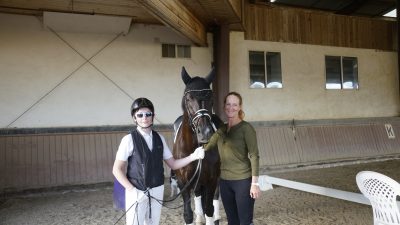
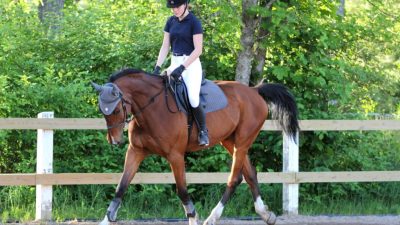



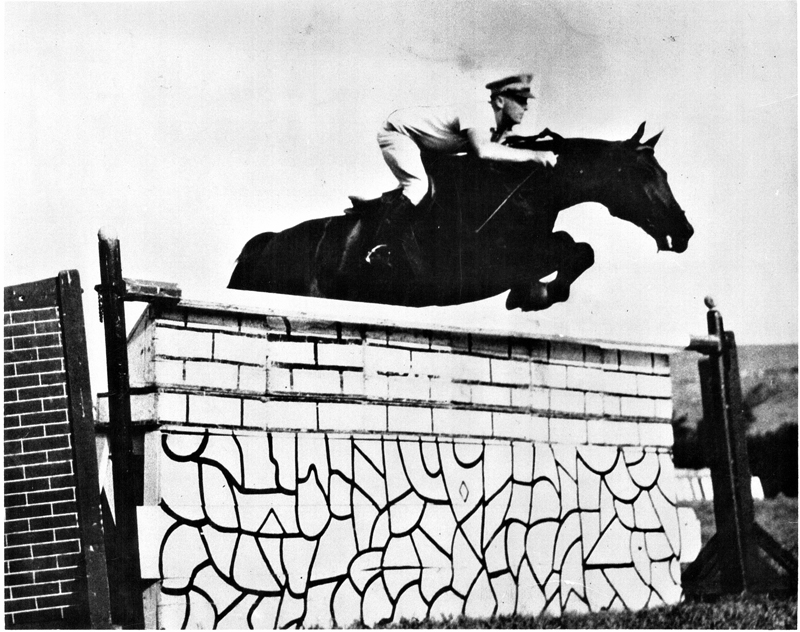






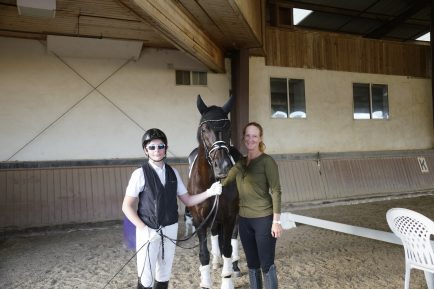
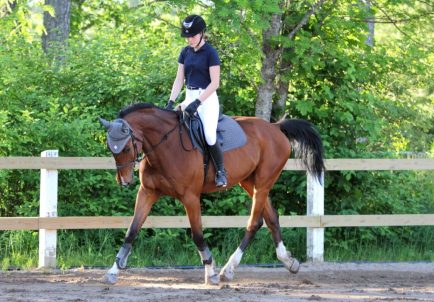
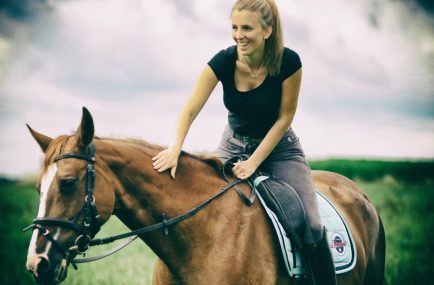
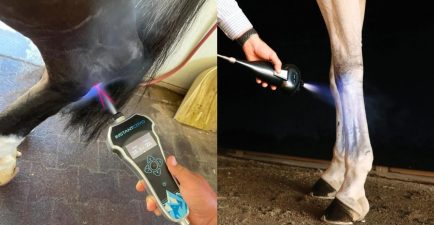

Comments